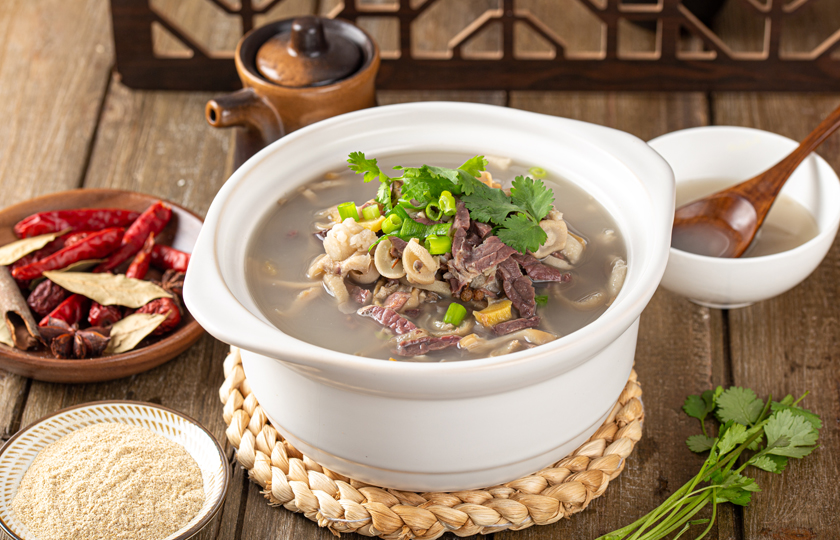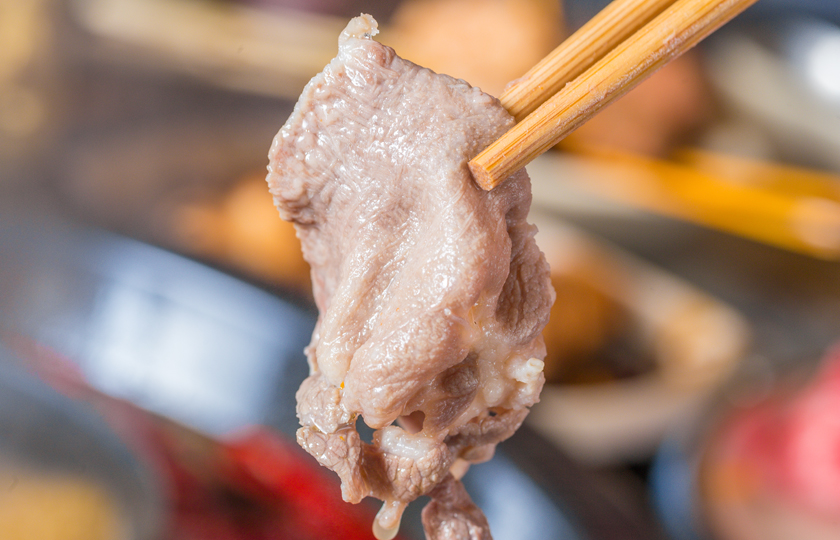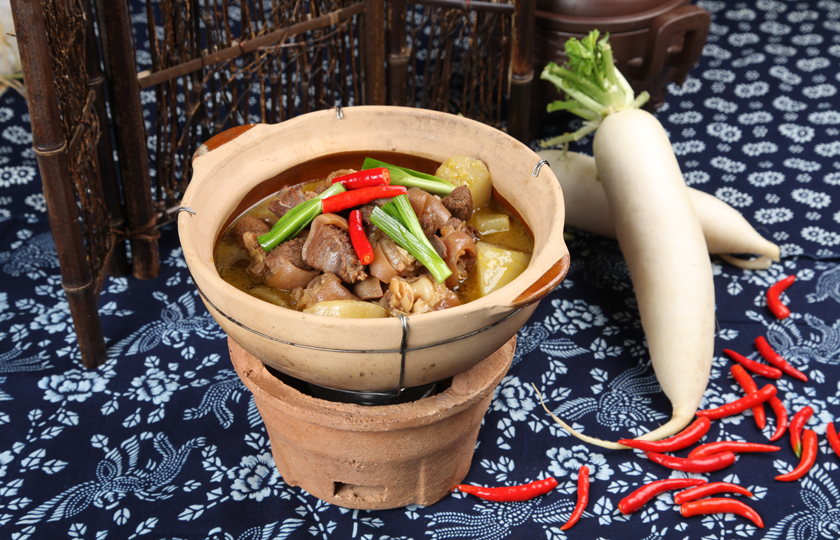Cooking Guide:Does Mutton Get Less Chewy When Cooked Longer?

Why do some mutton dishes turn out as tough as leather while others melt in your mouth? Does mutton get less chewy when cooked longer?
Does cooking mutton for a longer time make it less chewy?
In general, cooking mutton for a longer time will make it less chewy.
The science behind the texture change:
Mutton contains collagen and muscle fibers, which affect its texture. During long cooking, collagen gradually undergoes hydrolysis.
Collagen is a fibrous protein that provides structure and support in the meat. As the cooking time increases, collagen breaks down into gelatin due to the heat and moisture. Gelatin is soft and slippery, which makes the meat more tender.
At the same time, prolonged braising also causes the proteins in muscle fibers to denature. Muscle fibers are the basic units of muscle tissue, and they are tightly packed. As the meat heats up, the chemical bonds in the muscle fibers break, causing them to unwind and relax. The originally tight structure becomes looser, which transforms the mutton’s texture from chewy to soft.
Cooking examples:
For instance, when mutton is braised in a traditional way, if the cooking time is around 30-45 minutes, the meat might still retain some chewiness, because the collagen hasn’t broken down much and the muscle fibers haven’t relaxed fully.
However, if the cooking time is extended to 2-3 hours or more, the mutton becomes very tender. In dishes like mutton soup, after slow cooking for hours, the meat can be easily pulled apart with chopsticks and melts in your mouth, with almost no chewiness. This is because the long cooking time has significantly changed the meat's texture.
That said, cooking mutton for too long can cause nutrient loss and might result in the meat becoming overly soft, losing its original flavor and texture. Therefore, it’s important to adjust the cooking time according to personal preferences and the intended outcome.
How to make mutton soft quickly
Choosing the Right Cut of Mutton
Opt for cuts like mutton belly or ribs, which are naturally more tender or contain more fat. These cuts are easier to soften when cooked.
For example, mutton belly has a higher fat content, and as the fat melts during cooking, it helps make the meat juicier and more tender.
Pre-soaking Treatment
You can soak the mutton in saltwater or vinegar water. Soaking in saltwater helps the meat absorb some salt, improving its water retention and slightly loosening the meat fibers.
Vinegar water uses the acidity to break down some of the protein fibers, making the mutton easier to tenderize.
Typically, add 1-2 tablespoons of salt or vinegar to enough water to soak the mutton for an hour, then rinse it clean.
Start with Cold Water
When cooking mutton, always use cold water. Using hot water can cause the proteins in the meat to quickly denature, making it tough and affecting the texture.
Cold water allows the ice in the meat to sublimate into steam, helping the meat become tender and soft.
Add Acidic Ingredients
Adding acidic ingredients like lemon juice, ketchup, or fruit vinegar during cooking can help break down the collagen in the mutton, speeding up the tenderizing process.
For example, add 1-2 tablespoons of lemon juice for every 500 grams of mutton.
Alternate Between High and Low Heat
Start by bringing the mutton to a boil over high heat, then remove the lid and simmer for 20 minutes to eliminate any gamey odor.
Afterward, cover the pot and reduce the heat to low, letting it simmer slowly.
This method allows the meat to absorb more flavor and become tender. Slow-cook for 2-3 hours for the best results.
Using a Pressure Cooker
Using a pressure cooker is an effective way to quickly tenderize mutton.
The high pressure inside the cooker raises the boiling point of water, which helps break down the collagen in the meat. Typically, after the pressure builds, cook for 30-60 minutes, and the mutton will become soft and tender.
Additionally, during cooking, add salt later and ensure you add enough water at once. If the water level drops, add hot water as needed.

How long should mutton be cooked?
Different Cuts of Mutton Require Different Cooking Times
Mutton Belly: This cut is tender with a high fat content and typically takes about 1 to 1.5 hours to braise.
Mutton Leg: The meat from the leg is firmer and usually requires 1.5 to 2.5 hours. If cooking a whole leg, the time may extend to 3 to 3.5 hours.
Mutton Ribs: Braising mutton ribs generally takes around 1 to 2 hours.
Different Cooking Methods Require Different Times
Braising: When braising mutton in a regular pot, the cooking time is relatively long. On low heat, it typically takes 2 to 3 hours to allow the meat to fully absorb the flavors of the broth and become tender.
Pressure Cooker: A pressure cooker significantly shortens the cooking time. After reaching pressure, mutton usually cooks in 30 to 60 minutes.
How to know if mutton is overcooked
Test with Chopsticks
Insert chopsticks into the mutton. If the chopsticks easily penetrate the meat, as if poking through tofu with no resistance, it’s likely overcooked.
When mutton is properly cooked, there should be some resistance and elasticity when you insert the chopsticks, requiring a bit of effort.
For example, when cooking a mutton leg, overcooked meat will fall apart with just a poke, while perfectly cooked mutton will feel firm.
Observe the Shape
Overcooked mutton may break apart, with the once intact pieces becoming fragmented.
For instance, mutton belly should remain in whole pieces after normal cooking. If overcooked, the meat will become so tender that it falls apart into small chunks.
Additionally, the surface of overcooked mutton might appear rough or uneven.
Check the Color
If mutton is overcooked, it will darken and lose its vibrant color.
Freshly cooked mutton is typically light pink or pale brown. Overcooked mutton, however, may turn dark brown or even black. This is because prolonged heat causes changes in the proteins and pigments of the meat.
Taste the Chewiness
Overcooked mutton loses its chewiness and becomes so soft that it melts in your mouth without any meat texture.
Properly cooked mutton will still have some chewiness, with different cuts offering varying levels of resistance.
For example, mutton ribs, when cooked properly, should have a slight bounce and you should be able to feel the connection between the meat and the bone. If overcooked, they’ll be mushy and lack structure.

What to do if mutton is hard after cooking
If the mutton is too tough after cooking, you can try the following methods to improve its texture:
Re-cook It
Place the tough mutton back in the pot, add enough water to fully submerge it, and then simmer on low heat. This slow cooking process will gradually soften the meat fibers over time.
You can also add acidic ingredients like vinegar, lemon juice, or tomato paste to help break down the fibers in the mutton.
Slice or Shred and Stir-fry
Cut the tough mutton into thin slices or shreds.
Thin slices or shreds will heat more evenly during cooking, improving the texture.
You can then place the cut mutton in a hot pan with some oil, along with seasonings like green onions, ginger, and garlic, and stir-fry.
The heat and stirring will help loosen the fibers, making the meat more tender.
Grind It into Minced Meat
If the mutton is still too tough, you can grind it into minced meat.
Once minced, the mutton can be used for dumplings, buns, or meatballs.
During the preparation of these dishes, other ingredients like vegetables, eggs, and starch will be mixed with the mutton, which can help improve its texture and reduce toughness.























